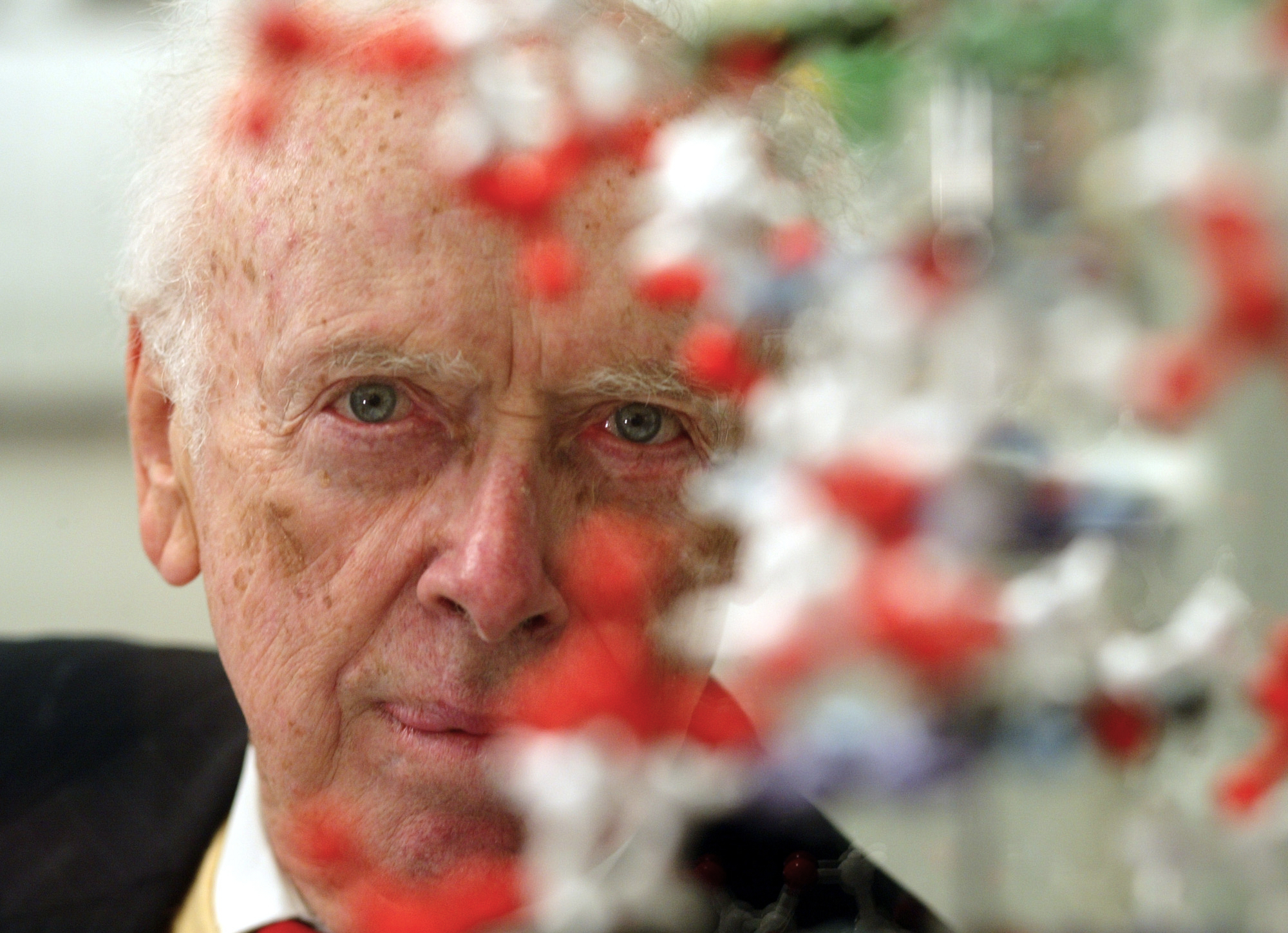Science
James Watson, Pioneer of DNA Structure, Passes Away at 97

James D. Watson, the renowned scientist who co-discovered the double helix structure of DNA in 1953, has passed away at the age of 97. His groundbreaking work transformed the fields of genetics and molecular biology, leading to significant advancements in medicine, forensics, and genealogy. Watson’s death was confirmed on Friday by his family, who noted that he had been in hospice care following a brief illness.
The discovery of the double helix, achieved alongside his colleague Francis Crick and Maurice Wilkins, earned Watson the 1962 Nobel Prize in Physiology or Medicine. At just 24 years old, Watson became a prominent figure in the scientific community. The double helix model not only elucidated how genetic information is stored but also provided insights into DNA replication, where the strands separate like a zipper. Watson famously described the beauty of the structure, stating, “It’s so beautiful.”
The Legacy of a Scientific Revolution
Watson’s work initiated a revolution that led to modern genetic research, including gene therapy, DNA profiling, and the mapping of human ancestry. His contributions to science were profound, as he noted, “There was no way we could have foreseen the explosive impact of the double helix on science and society.” The double helix became an iconic symbol, even appearing in cultural references such as artwork by Salvador Dali and on British postage stamps.
Despite his scientific achievements, Watson’s later years were marred by controversy due to offensive remarks regarding race and intelligence. In a 2007 interview with the Sunday Times Magazine, he claimed to be “inherently gloomy about the prospect of Africa,” suggesting that intelligence levels differed among races. These comments led to widespread condemnation and resulted in his suspension from the position of chancellor at the Cold Spring Harbor Laboratory, where he had worked for nearly four decades. The laboratory eventually revoked several honorary titles due to his remarks, with its president describing them as “reprehensible” and “unsupported by science.”
Personal and Professional Journey
Watson was born on April 6, 1928, in Chicago, in a family that valued education and scientific inquiry. His interest in genetics was sparked at a young age, leading him to pursue a career in biology. He earned his Ph.D. at the age of 23 and later collaborated with Francis Crick at Cambridge University, where their partnership flourished. The duo’s work on DNA structure was aided by crucial X-ray diffraction data from Rosalind Franklin, whose contributions were long overlooked.
After the DNA discovery, Watson shifted his focus to educational leadership. He served as the director of Cold Spring Harbor Laboratory from 1968 and played a pivotal role in the Human Genome Project, which aimed to map the entire human DNA sequence. In 2000, he celebrated a significant milestone at the White House, announcing the completion of a working draft of the human genome.
Throughout his career, Watson maintained an unyielding passion for science, often challenging norms and advocating for open discussions on controversial topics. He once stated, “A goodly number of scientists are not only narrow-minded and dull, but also just stupid,” reflecting his candid approach to scientific discourse.
Watson’s legacy is a complex tapestry woven from extraordinary scientific accomplishments and contentious public statements. His contributions to biology and genetics are undeniable, yet his later remarks on race overshadowed his earlier achievements. As Dr. Francis Collins, the former director of the National Institutes of Health, noted in 2019, Watson’s inflammatory comments were “profoundly misguided and deeply hurtful.”
James D. Watson leaves behind a complicated legacy as a pioneer in genetics and a controversial figure in the scientific community. His co-discovery of the double helix remains a cornerstone of modern biology, illustrating both the potential of scientific inquiry and the importance of ethical considerations in research.
-

 Science3 weeks ago
Science3 weeks agoInterstellar Object 3I/ATLAS Emits Unique Metal Alloy, Says Scientist
-

 Science3 weeks ago
Science3 weeks agoResearchers Achieve Fastest Genome Sequencing in Under Four Hours
-

 Politics3 weeks ago
Politics3 weeks agoAfghan Refugee Detained by ICE After Asylum Hearing in New York
-

 Business3 weeks ago
Business3 weeks agoIconic Sand Dollar Social Club Listed for $3 Million in Folly Beach
-

 Health3 weeks ago
Health3 weeks agoPeptilogics Secures $78 Million to Combat Prosthetic Joint Infections
-

 Lifestyle3 weeks ago
Lifestyle3 weeks agoJump for Good: San Clemente Pier Fundraiser Allows Legal Leaps
-

 Science3 weeks ago
Science3 weeks agoMars Observed: Detailed Imaging Reveals Dust Avalanche Dynamics
-

 Business3 weeks ago
Business3 weeks agoMcEwen Inc. Secures Tartan Lake Gold Mine Through Acquisition
-

 World3 weeks ago
World3 weeks agoUS Passport Ranks Drop Out of Top 10 for First Time Ever
-

 Health3 weeks ago
Health3 weeks agoResearcher Uncovers Zika Virus Pathway to Placenta Using Nanotubes
-

 Entertainment3 weeks ago
Entertainment3 weeks agoJennifer Lopez Addresses A-Rod Split in Candid Interview
-

 Business3 weeks ago
Business3 weeks agoSan Jose High-Rise Faces Foreclosure Over $182.5 Million Loan









